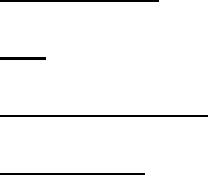
WARNING
Dry cleaning solvent SD-2, used to clean parts is potentially dangerous to
personnel and property. Do not use near open flame or excessive heat. Flash
point of solvent is 138F.
(2) Bolts, nuts, and screws: Check that they are not loose, missing, bent, or broken. You can't try them all with
a tool, of course, but look for chipped paint, bare metal, or rust around bolt heads. Tighten any that you find loose.
(3) Welds: Look for loose or chipped paint, rust, or gaps where parts are welded together. If you find a bad.
weld, report it to direct support.
(4) Electric wire's and connectors: Look for cracked or broken insulation, bare wires, and loose or broken
connectors. Tighten loose connections and make sure the wires are in good condition.
(5) Hoses and fluid lines: Look for wear, damage, and leaks. Make sure clamps and fittings are tight. Wet
spots show leaks, of course, but a stain around a fitting or connector can mean a leak. If a leak comes from a loose fitting
or connector, tighten it. If something is broken or worn out, either correct it or report it to direct support (refer to MAC
chart).
e. It is necessary for you to know how fluid leaks affect the status of your equipment. The following are definitions of
the types/classes of leakage you need to know to be able to determine the status of your equipment. Learn and be
familiar with them and REMEMBER When in doubt, notify your supervisor!
Leakage definitions for Organization PMCS.
CLASS I
Seepage of fluid (as indicated by wetness or discoloration) not great enough to form drops.
CLASS II
Leakage of fluid great enough to form drops but not enough to cause drops to drip from the item being
checked/inspected.
CLASS III
Leakage of fluid great enough to form drops that fall from the item being checked/inspected.
62

